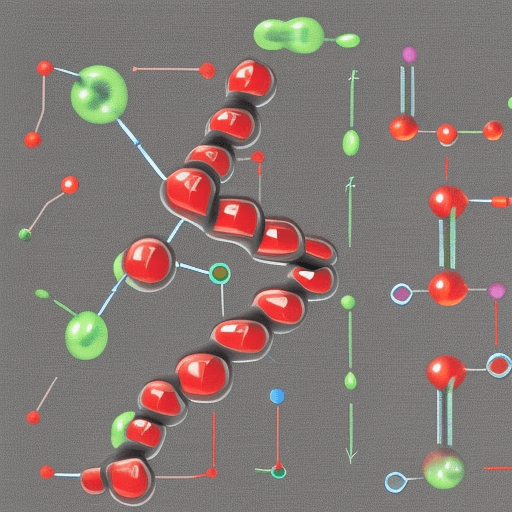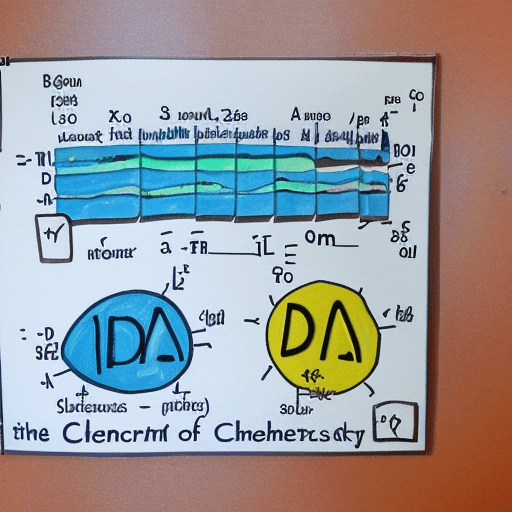Is CO2 polar or nonpolar?
When it comes to chemistry, there are a lot of things that can be confusing for students.
One such topic is the polarity of molecules.
So let’s jump in and explore the polarity of CO2 and help you understand whether it is polar or nonpolar.
CO2 is nonpolar.

CO2 (carbon dioxide) is a nonpolar molecule. This means that it has an evenly distributed electron cloud and lacks a notable charge difference between atoms.
5 key properties that make CO2 nonpolar:
- Symmetrical/linear structure – The central carbon atom binds two identical oxygen atoms on either side. This creates symmetry and an even distribution of charge.
- No hydrogen bonding – The molecule lacks hydrogen atoms, which precludes hydrogen bonding between CO2 molecules. This type of intermolecular force would cause polarity.
- Even electronegativity – Carbon and oxygen have similar electronegativity values, so neither atom strongly pulls electrons towards it.
- No permanent dipole moment – While CO2 can have an instantaneous dipole moment, it lacks a permanent charge separation. The linear structure prevents lasting uneven charge distribution.
- Insolubility in water – Nonpolar molecules like CO2 tend to have low solubility in polar solvents like water. CO2 forms carbonic acid upon dissolving.
So in summary, the symmetrical linear structure, equivalent oxygen-carbon bonds, lack of hydrogen bonding, and low solubility all indicate that carbon dioxide is a nonpolar molecule overall.
The electron cloud is evenly dispersed leading to a net-neutral charge distribution.
Explain It To A Child
Carbon dioxide is not a polar molecule because it has a linear, symmetrical shape. The two oxygen atoms are bonded to the central carbon atom.
Carbon dioxide is a molecule that does not have a charge. This is because it has a linear, symmetrical shape, with the two oxygen atoms bonded to the central carbon atom.
Carbon dioxide is a gas that is composed of one carbon atom and two oxygen atoms.
The carbon atom has four electrons in its outer shell, and the oxygen atoms each have six electrons in their outer shells.
Because the electron pairs are evenly distributed around the molecule, it is nonpolar.
Is CO2 polar or nonpolar?
Carbon dioxide is a nonpolar molecule.

This is because it has a linear, symmetrical shape, with the two oxygen atoms bonded to the central carbon atom.
- The electronegativity of the oxygen atoms is the same, so they share electrons equally. This results in a nonpolar covalent bond between the atoms.
- Carbon dioxide is also a nonpolar molecule because its dipole moment is zero.
This means that the distribution of charge is symmetrical and there are no regions of excess positive or negative charge.
Why is CO2 nonpolar but CO is polar?

The reason for this has to do with the structure of the molecules.
- CO2 is what’s known as a linear molecule, meaning that the atoms are arranged in a straight line.
- This gives the molecule a symmetrical shape, which cancels out any dipole moments and makes it nonpolar.
- In contrast, CO is a bent molecule, meaning that the atoms are arranged at an angle.
This gives the molecule an asymmetrical shape, which creates a dipole moment and makes it polar.
So, to sum up, CO2 is nonpolar because it’s linear, and CO is polar because it’s bent.
What are some applications of CO2 nonpolar molecules?

CO2 nonpolar molecules are found in a variety of everyday products, from food and beverages to cosmetics and cleaning products.
- In the food industry, CO2 is used as a propellant in aerosolized foods like whipped cream and soda.
- It is also used as a cooling agent in ice cream and other frozen desserts.
- In the cosmetics industry, CO2 is used as an ingredient in face creams and other skincare products.
- And in the cleaning industry, CO2 is used as a dry-cleaning solvent.
All of these applications rely on the fact that CO2 molecules are nonpolar, meaning they do not interact with other molecules.
This makes CO2 an ideal candidate for many industrial and consumer applications.
How do you determine the polarity of CO2?

To determine the polarity of CO2, scientists use a method called electric displacement.
- This involves measuring the amount of charge that is deflected when an electric field is applied to the molecule.
- CO2 is a polar molecule because it has a dipole moment, meaning that the electronegativity of the oxygen atoms is not equal.
As a result, when an electric field is applied, the negative charges are attracted to the positive side of the field, and the molecule becomes polarized.
This measurement can be used to calculate the polarity of CO2 and other molecules.
What type of bond is CO2?1
CO2 is a molecule composed of two oxygen atoms and one carbon atom.
The bond between the carbon and oxygen atoms is a double bond, which means that there are two electron pairs shared between the atoms.
- The double bond makes CO2 a relatively stable molecule, and it is this stability that makes CO2 an important greenhouse gas.
- Greenhouse gases like CO2 help to trap heat in the atmosphere, preventing it from escaping into space.
- This process helps to keep the Earth’s surface warm, making it habitable for life.
However, the increased levels of CO2 in the atmosphere due to human activity is causing the Earth to warm at an unprecedented rate, with potentially disastrous consequences for life on our planet.
As a result, carbon dioxide molecules do not interact strongly with other molecules and are not attracted to polar regions.
Article Sources
Jacks of Science sources the most authoritative, trustworthy, and highly recognized institutions for our article research. Learn more about our Editorial Teams process and diligence in verifying the accuracy of every article we publish.
- What type of bond is CO2? ↩︎
